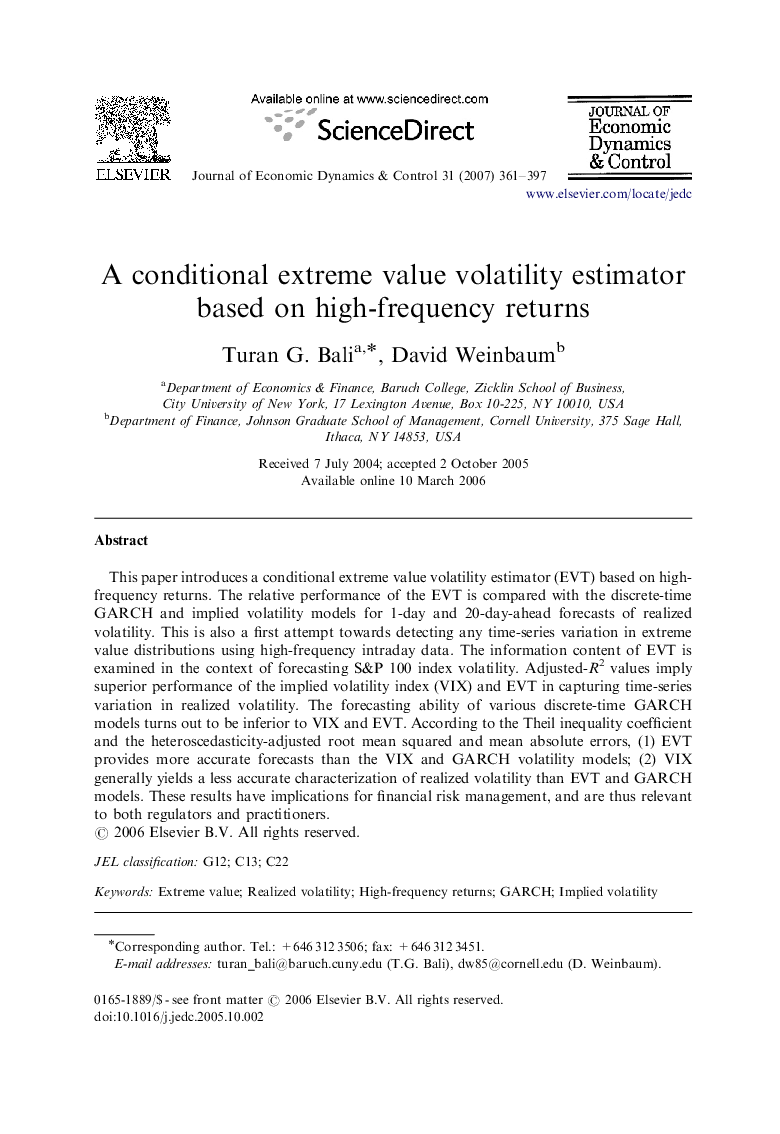| Article ID | Journal | Published Year | Pages | File Type |
|---|---|---|---|---|
| 5099275 | Journal of Economic Dynamics and Control | 2007 | 37 Pages |
Abstract
This paper introduces a conditional extreme value volatility estimator (EVT) based on high-frequency returns. The relative performance of the EVT is compared with the discrete-time GARCH and implied volatility models for 1-day and 20-day-ahead forecasts of realized volatility. This is also a first attempt towards detecting any time-series variation in extreme value distributions using high-frequency intraday data. The information content of EVT is examined in the context of forecasting S&P 100 index volatility. Adjusted-R2 values imply superior performance of the implied volatility index (VIX) and EVT in capturing time-series variation in realized volatility. The forecasting ability of various discrete-time GARCH models turns out to be inferior to VIX and EVT. According to the Theil inequality coefficient and the heteroscedasticity-adjusted root mean squared and mean absolute errors, (1) EVT provides more accurate forecasts than the VIX and GARCH volatility models; (2) VIX generally yields a less accurate characterization of realized volatility than EVT and GARCH models. These results have implications for financial risk management, and are thus relevant to both regulators and practitioners.
Related Topics
Physical Sciences and Engineering
Mathematics
Control and Optimization
Authors
Turan G. Bali, David Weinbaum,
